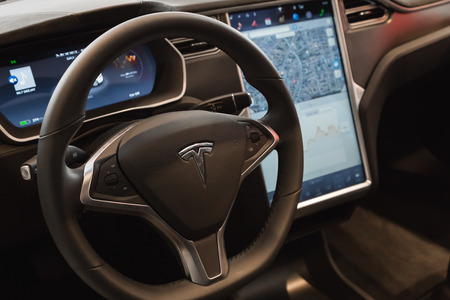I have a proposal for Tesla CEO Elon Musk.
Sell, or spin off, Tesla’s money-losing automotive operations (as sleek, shiny and eye-popping as those vehicles are)…
Instead, focus the future of Tesla where the real profit and growth bonanza is for the next decade:
Energy storage.
I know, I know. Sounds boring. Basically, we’re talking about hundreds of phone booth-sized boxes of lithium-ion batteries all lined up in neat rows, and wired up to the power grid.
But it’s revolutionary.
And proving just how revolutionary it is, Musk’s company basically solved Australia’s budding energy crisis in about 100 days.
As I noted months ago (“The Next Big Thing: Lightning in a Bottle”), summertime power blackouts pop up with regularity in the Land Down Under…
- South Australia: The state’s entire population of 1.7 million residents lost all power for hours on September 28, last year.
- Sydney: Its 5 million residents faced three days’ worth of rolling blackouts in February.
- Victoria and New South Wales: These states, with a combined population of more than 12 million — including Melbourne, the nation’s second-largest city — nearly went dark as well.
The problem?
Literally too much dependence on a good thing — wind and solar power (which now provide around 40% of the nation’s power).
And — thanks to utility regulators’ overly aggressive mothballing of coal-fired power plants — it also left power companies with no way to fill the gap on days of peak demand when everyone has their air-conditioners cranked to the max.
Enter Musk and Tesla. In roughly 100 days’ time, the company deployed 129 megawatts’ worth of its utility-scale Powerpack battery storage units.
Last week, it brought the installation online and tied it into South Australia’s power grid.
Problem solved.
Tesla & Big Batteries
According to a new report from Bloomberg New Energy Finance (BNEF), the global energy storage market is set to rise by an exponential amount, basically “doubling six times over” between now and 2030.
By the way, experts measure electricity storage in terms of gigawatt-hours — a measurement of the output of large power stations.
To give you a sense of what “doubling six times over” means … according to BNEF, the amount of storage in the world in 2016 equaled something less than 5 gigawatt-hours, rising 60-fold to 300 gigawatt-hours by 2030.
We’ll also see a similar trajectory in prices to what’s already come before in wind and solar (and computer chips for that matter). BNEF estimates the cost of these “big battery systems” will drop by more than half (after dropping by 60% already since 2010).
The reason?
Tesla isn’t the only company ramping up battery production with a so-called “gigafactory.” As I’ve noted in recent months, Daimler is building a new $500 million battery plant in Germany. There’s a $3 billion factory being built in Thailand. Others are in the works for upstate New York, Australia, China and elsewhere.
The Future of Tesla
I already have a promising, under-the-radar energy storage stock in the Total Wealth Insider portfolio (and — unlike Tesla — this company is profitable and paying down its long-term debt). You can see why the growth trend for energy storage will be phenomenal for early entrants in this fledgling industry.
That might especially be the case for the future of Tesla. Carmaking is a boom-and-bust business.
Automotive styles change over time. Factories have to be retooled. Hundreds of components need to be built and brought together at the right place and at the right time to build a vehicle.
It all takes lots and lots of constant reinvestment.
Compare that to the energy storage business, where the same basic product can be sold over and over and over again to a legion of power companies all over the world — a $1.4 trillion marketplace.
If Tesla ever figured out that its real business is in storage instead of sports cars … look out.
Regards,

Jeff L. Yastine
Editor, Total Wealth Insider
Right now, an untapped ocean of energy—found underneath all 50 states—is about to transform the world’s energy industry. In fact, there’s enough of this energy in the first six miles of the earth’s crust to power the United States for the next 30,000 years. Wanna know this untapped energy source? Learn NOW! And as companies rush to extract this energy from the ground, they’ll need the help of one Midwestern company’s technology to make use of it. This is your chance to take advantage of John D. Rockefeller-type fortunes. Early Bird Gets The Worm...
Source: Banyan Hill
